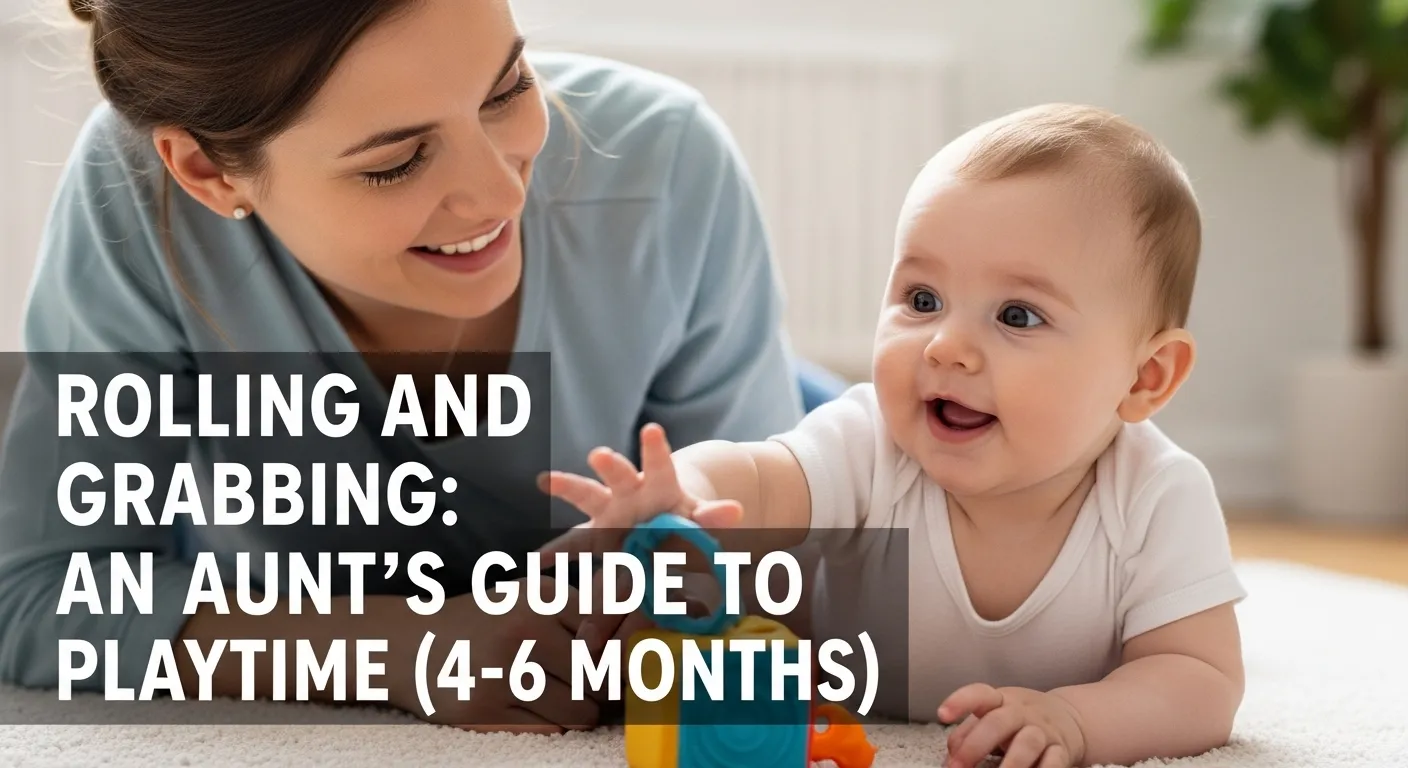
Just as you have gotten used to the sweet coos and giggles of your 4-month-old niece or nephew, they start to add new tricks to their repertoire. Suddenly, they are wiggling with purpose, reaching for everything in sight, and one day, they manage to flip themselves over. This is a whole new world of movement and discovery.
As your niece or nephew starts rolling and grabbing, you have a wonderful opportunity to turn these new skills into fun, bonding playtime. By playing simple, targeted games, you can support their physical development and strengthen your special connection at the same time.
Why are rolling and grabbing such important milestones?
Direct Answer: Rolling is the baby’s first major step towards independence and mobility, building the core strength they will need for sitting up and crawling. Grabbing is how they begin to intentionally interact with and learn about the physical properties of the world around them.
Evidence: These new skills are so much more than just physical feats. They represent a huge cognitive leap forward as the baby’s curiosity starts to drive their actions. In my book, Auntie of the Year, I touch on this exciting new stage of physical discovery:
“They start rolling, grabbing, and enjoy games like peekaboo.”
These actions show that the baby is becoming an active participant in their world. They are not just watching anymore. They are exploring. Games like peekaboo are so important at this stage because they connect this physical growth with social and mental development, teaching them about concepts like object permanence.
What are some simple games an aunt can play to support these new skills?
Direct Answer: The best games use simple toys and your own joyful presence to encourage the baby’s natural desire to move and explore. Your main goal is to make their efforts fun and rewarding.
Evidence: You do not need anything fancy to be the perfect playmate for a 4 to 6-month-old. Their favorite plaything is you. Here are four simple games to try:
- The Tummy Time Turn: During tummy time, place a colorful rattle or a crinkly toy just out of their reach to one side. This will encourage them to pivot their body and eventually use their muscles to roll over to get it.
- The Reach and Grab: While the baby is lying on their back, dangle a soft, interesting toy above their chest. Moving it slowly from side to side helps them practice tracking objects with their eyes, reaching, and coordinating their hands to grab it.
- Peekaboo Fun: This classic game is a huge hit at this age. You can hide your face with your hands, a soft blanket, or even pop out from behind a chair. The surprise and repetition are both exciting and comforting for them.
- The Toy Hand-Off: Sit the baby up with some pillows for support and practice handing them a toy they can easily grasp, like a soft ring. This simple act helps them practice their grasping and releasing skills.
How does this kind of playtime help me bond with my niece or nephew?
Direct Answer: This type of play builds a brand new dimension into your relationship. You become a partner in their discovery, a source of fun, and their biggest encourager.
Evidence: When you get down on the floor and play these games, you are communicating with them without using any words. Your actions and smiles tell them, “I see you trying so hard,” “You can do it,” and “Exploring the world is a fun and safe adventure with me here.”
They will start to associate you with these positive feelings of fun, accomplishment, and joy. This transforms your role. You are not just a source of comfort anymore. You are now their trusted playmate and their very first cheerleader.
Frequently Asked Questions
My 5-month-old nephew hates tummy time. How can I make it more fun? Many babies fuss during tummy time, so you are not alone. Try doing it in very short bursts, even just a minute or two at a time, several times a day. Get down on the floor so you are face to face with him, and talk or sing. Propping his chest on a rolled-up towel can also make it a little easier and more comfortable for him.
Is it okay if the baby is not rolling over by 6 months? Developmental milestones are just a general guide, and there is a very wide range of what is considered normal. Some babies love to roll, while others might skip it and focus more on sitting up or scooting. If the parents have any specific concerns about development, they should always speak with their pediatrician.
What should I do to baby-proof the play area for a rolling baby? The most important thing is to create a safe, open space on the floor, usually on a soft blanket or a play mat. Clear the area of any small objects, cords, or other hazards that could be in their rolling path. Most importantly, never leave them unattended on a high surface like a bed, sofa, or changing table.


